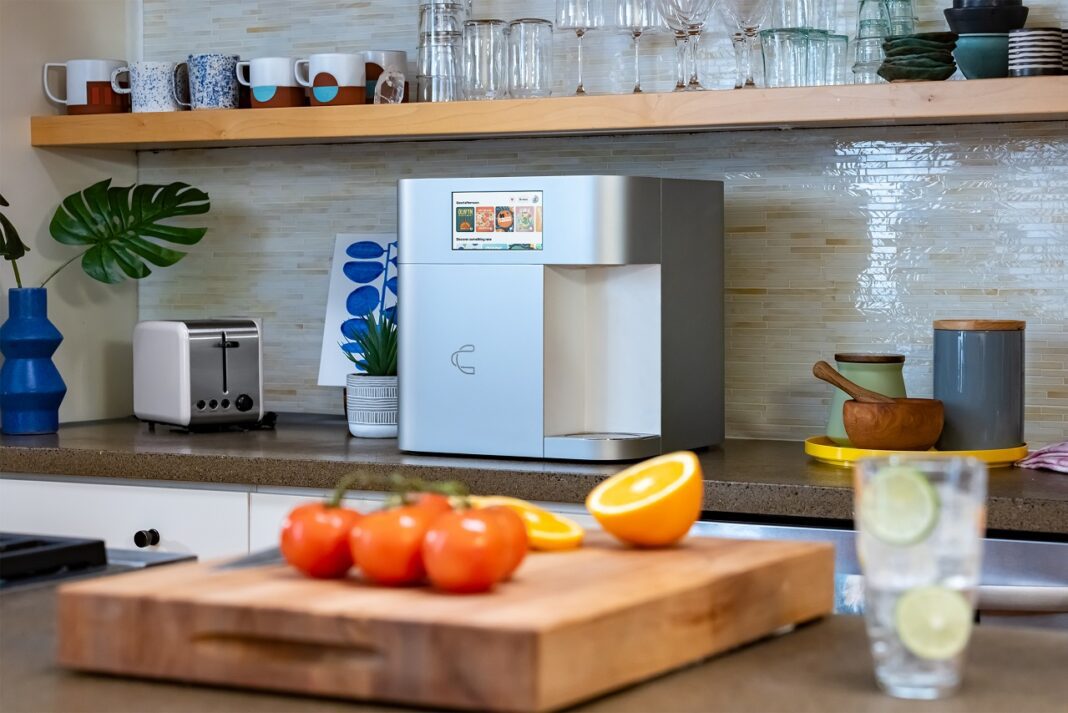MILAN – A machine that can prints thousands of beverages directly in your kitchen – from juice, soft drinks and iced coffee, to hard seltzers, wine, and cocktails – without the need for plastic, aluminum, glass or other wasteful containers: is it a dream? Not at all: this innovative technology exists, and that’s called Cana One. The world’s first molecular beverage printer, that is also friend of the environment. Here some more technical details, with also the answers by Lance Kizer, Chief Science Officer at Cana.
Cana’s goal is to eliminate the need for bottling, packaging, shipping and other manufacturing waste. But how does it work exactly with this molecular beverage printer?
To answer the question, it is enough to do some calculations: Cana will eliminate the need for more than 100 beverage containers per month for the typical American household. At scale, Cana aims to eliminate the use of plastic and glass containers, water waste, and the CO2 emissions used in global beverage manufacturing and distribution. In addition, Cana would eliminate the time-sucking chore of buying, storing, disposing and recycling cans, bottles, and other containers in home.
But how did the idea of designing a molecular beverage printer come about?
This revolutionary tool is the result of joint work on three different and interconnected levelsThanks to Cana’s team, and the three years studies on what people drink at the molecular level, commercializing breakthrough research in flavor and analytical chemistry. All this combined with scientists’ work, by identifying and isolating the specific trace compounds that drive flavor and aroma for thousands of unique commercially available beverages. They created the world’s first universal beverage ingredient set, which recreates thousands of different drinks using a simplified set of ingredients that can be printed out of a long-lasting ingredient cartridge.
Finally, Cana engineers designed, tested, and have now demonstrated a novel microfluidic liquid dispense technology that can affordably, quickly, and accurately combine Cana’s individual flavoring ingredients in a small form factor, delivering a better beverage than the commercially available bottled options.
Speaking of coffee, what recipes can be replicated with your technology and how? What is the difference with a traditional espresso or capsule machine?
Lance Kizer: “Cana One, which sits on a kitchen countertop, offers unique discovery experiences, novel brands, and options for every lifestyle or preference. Customers use Cana’s touchscreen display to explore, discover, and create their perfect drink from thousands of beverage types and brands. Customers can personalize every beverage to their preferred levels of alcohol, caffeine, or sugar, customizing beverages for breakfast, post-workout, dinner, or relaxation. Ingredient cartridges will be automatically replaced, at no additional cost to customers, as they run low. Customers easily return cartridges to Cana in prepaid packaging, where they are reused up to 12 times before being fully recycled.”
How can you molecularly reproduce the quality of a specialty coffee?
Lance Kizer: “The approach described above means that our technology can create any style of coffee. Since any coffee is a mixture of chemicals that are extracted from the ground bean. Cana’s approach can chemically analyze coffee brewed from any specialty bean or brewing process and then through iteration and consumer testing identify the particular set of molecules that distinguish a specialty brew from more mainstream styles.”
How can you also prepare cold brew, which needs a very long brewing time?
Lance Kizer: “Cold brew is a slow process, which means that many consumers choose to purchase cold brew-style coffee vs making it at home.
Cana has prioritized developing cold brew style coffees for our Cana One device since that style of coffee generates the most single-use packaging waste. Cold brew are made by extracting molecules from ground coffee at low temperatures. This approach extracts different levels of taste, aroma and functional molecules from ground coffee vs hot-brewed.
To create a cold brew coffee we have chemically analyzed a variety of different cold brew style coffees using mass spectrometry and determined the levels of all the taste, aroma and functional molecules in that style of brew.
We then recreate cold brew by determining through experimentation and consumer testing the best set of pure compounds that fully create the sensory experience of cold brew coffee.”
How much does it cost to have a model Cana One in your own home?
Cana One is available for pre-order with a $99 reservation fee against a $499 purchase price for the first 10,000 units, after which the price will go up to $799. Customers can reserve their Cana One device today for $99, which will convert to a credit toward purchase. The first 10,000 orders are guaranteed a price of $499. After that, the regular price will be $799. The reservation fee is refundable at any time, and customers will have the opportunity to review the final product features closer to its ship date, before committing to a purchase.
Where can we get one?
You can reserved Cana One, clicking in this link.


















